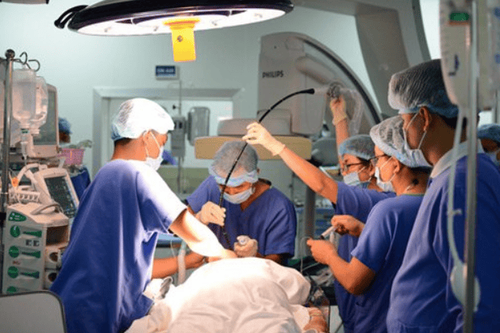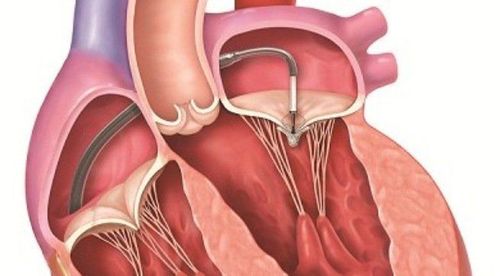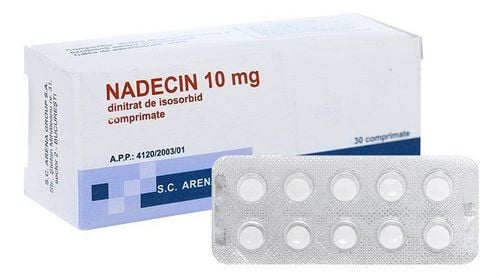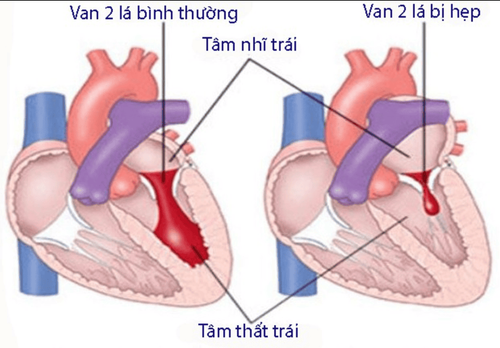This is an automatically translated article.
The article is professionally consulted by Cardiology & Thoracic Surgery doctors - Cardiovascular Center - Vinmec Central Park International General Hospital.Minimally invasive open-heart surgery is an inevitable trend of medicine in the world as well as in Vietnam because of the outstanding advantages that this method brings in cardiovascular surgery.
1. What is minimally invasive open heart surgery?
Minimally invasive open-heart surgery and laparoscopic surgery in the treatment of congenital heart disease and acquired heart disease in adults have become two quite popular treatment methods in Vietnam in recent years. This method shows the progress of medicine, with many outstanding advantages, helping patients to quickly recover after surgery and limit scarring.
In Vietnam, the minimally invasive open-heart surgery method is applied in the treatment of cardiovascular disease for both older children and adults. This is the development trend of medicine in the world as well as in our country. However, not all medical facilities are capable of applying minimally invasive open-heart surgery and laparoscopic surgery to treat cardiovascular disease, especially in older children.
Usually, to perform open heart surgery, doctors access the heart through an incision in the middle of the breastbone. This not only risks leaving a long scar, but also causes many complications when having to separate the sternum (which causes this part of the bone to bulge in girls). Therefore, minimally invasive open-heart surgery under endoscopic guidance is applied to minimize the need for deep intervention in the sternum.
To perform well the minimally invasive open-heart surgery method, the doctor must be very proficient in classic surgery and have high expertise in the field of cardiovascular surgery. When doing heart surgery for a patient, the heart will stop beating, the lungs will not work, but still have to keep the patient alive and the prognosis stable. Therefore, in order to intervene with heart damage, the doctor will have to repair in the damaged areas through a very small thoracic incision (less invasive nature) and requires a video system of the endoscope to support the diagnosis. better view of the surgical site. The surgical instruments equipped for the operation must also be specialized tools for laparoscopic heart surgery.

Phẫu thuật tim mạch tại Bệnh viện Đa khoa Quốc tế Vinmec
2. In what case is minimally invasive open-heart surgery indicated?
Surgery to close the atrial septal defect: This is a form of congenital heart disease that causes blood to flow between two chambers of the heart (left and right atrium). With an atrial septal defect, blood flows abnormally from the left atrium through the right atrium and into the right ventricle. As a result, the right ventricle must receive an extra amount of blood, so it will gradually dilate and lead to right ventricular failure. Surgery for mitral valve disease: When it is necessary to repair the valve or replace the mitral valve. With mitral stenosis, blood flow from the left atrium to the left ventricle is limited. On the other hand, mitral regurgitation causes some of the blood going down the left ventricle to back up into the left atrium. Therefore, in both cases of mitral valve disease, the heart has to work harder to ensure an adequate supply of blood to the brain, kidneys and other organs of the body, increasing the risk of heart failure. Surgery for tricuspid valve disease: If the tricuspid valve is narrowed, blood flow from the right atrium to the right ventricle is impeded. If the tricuspid valve doesn't close properly (i.e., regurgitation), some of the blood from the right ventricle will back up into the right atrium. Both different instances of tricuspid valve disease increase the risk of heart failure. Aortic valve replacement: The aortic valve is responsible for controlling the flow of oxygen-rich blood from the left ventricle into the aorta, thereby leading blood to organs throughout the body. Therefore, this is a heart valve that plays a particularly important role in the blood circulation system in particular and the whole body in general. Aortic valve replacement is used in cases of aortic regurgitation or aortic stenosis, when the left ventricle must work harder than usual, resulting in thickened (hypertrophic) ventricular walls and chambers. enlarged (dilated) ventricles.

Phẫu thuật tim hở ít xâm lấn có thể chỉ định trong nhiều trường hợp với hiệu quả cao
3. Advantages of minimally invasive open-heart surgery
Patients have less infections and especially high aesthetics, do not have to carry a long incision (less than 5cm);
The ability to recover after surgery is quite high, the incision heals quickly. Help patients minimize the damage caused by surgery: less pain due to small incisions, less blood loss, low risk of blood transfusion, no complications of sternum inflammation. Reduced ICU recovery time as well as hospital stay. Postoperative care of less invasive open-heart surgery is simpler than that of the classic surgical approach.
4. Where is less invasive open heart surgery good?
Currently, minimally invasive open-heart surgery technique has been implemented at Vinmec International General Hospital system. The technical process and equipment for endoscopy at Vinmec meet international standards and are always guaranteed in a methodical and correct manner. The technique performed by Vinmec's experienced team of leading medical doctors will give accurate and reliable results.
Please dial HOTLINE for more information or register for an appointment HERE. Download MyVinmec app to make appointments faster and to manage your bookings easily.













